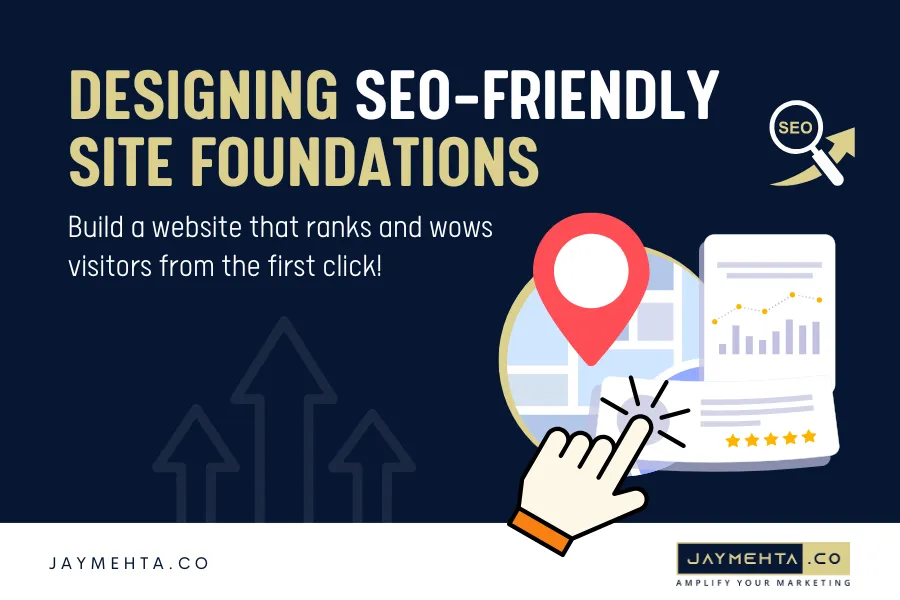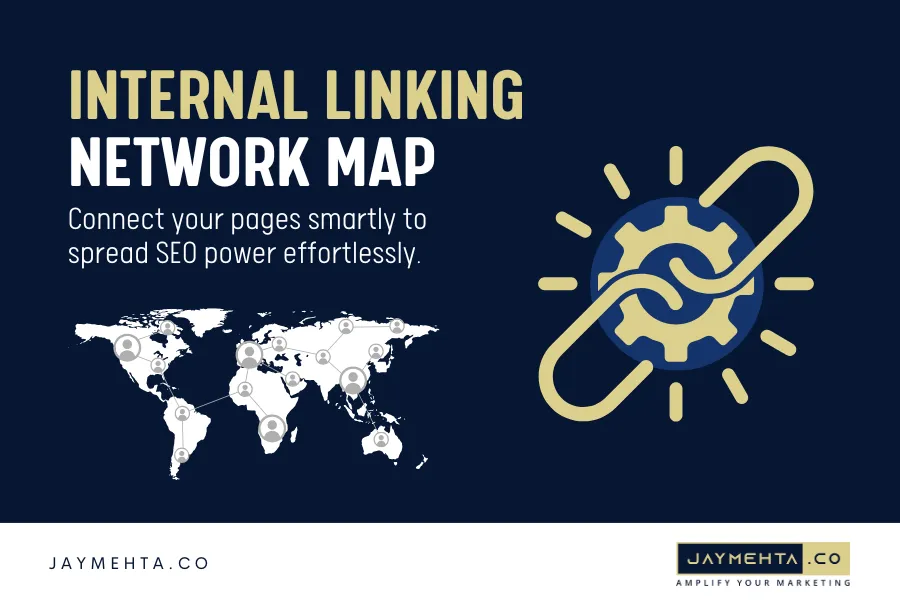SEO website design is the art and science of building a website that’s visually appealing, easy to navigate, and optimized for search engines. In today’s digital world, your website is often the first impression you make on potential customers. But even the most beautiful site won’t help your business if people can’t find it on Google.
A smart, SEO-friendly site structure is the foundation of a successful online presence. It helps search engines crawl and index your content efficiently, while guiding users smoothly from one page to the next. In this detailed guide, you’ll learn how to master every aspect of SEO website design—from mobile responsiveness to internal linking strategies—so your site not only looks great but also ranks high and converts visitors into loyal customers.
The Power of SEO Website Design
SEO website design is about more than aesthetics—it’s about building a site that works for both users and search engines. When you prioritize SEO in your design process, you unlock several powerful benefits:
- Higher Search Rankings: Search engines like Google reward websites that are easy to crawl, well-structured, and optimized for keywords. This means more organic traffic and visibility for your business.
- Better User Experience: A well-designed site structure makes it easy for visitors to find what they need, reducing bounce rates and increasing engagement. Studies show that 94% of first impressions are design-related, and 75% of users judge a company’s credibility by its website.
- Increased Conversions: When users can easily navigate your site and find relevant information, they’re more likely to take action—whether that’s making a purchase, filling out a form, or subscribing to your newsletter.
Personal Example: When I redesigned a client’s e-commerce site with SEO in mind, we saw a 40% increase in organic traffic and a 25% boost in sales within three months. The key was a clear, logical structure and fast, mobile-friendly design.
Why SEO-Friendly Site Structure Matters
A well-planned SEO-friendly site structure is like a well-organized library—everything is easy to find, and nothing gets lost in the shuffle. Here’s why it’s crucial:
- Crawlability: Search engines use bots to crawl your website. A clear structure ensures they can find and index all your important pages, which is essential for ranking.
- User Navigation: Logical categories and subcategories help users find what they need quickly, improving satisfaction and increasing the likelihood they’ll return.
- Keyword Targeting: Organizing your content by topic allows you to target specific keywords on each page, making your site more relevant for search queries.
- Reduced Duplicate Content: A clear hierarchy minimizes duplicate content risks by ensuring each page serves a unique purpose and avoids keyword cannibalization.
- Enhanced Link Equity Distribution: Strategic internal linking ensures “link juice” flows to priority pages, boosting their authority and rankings.
Think of your site as a pyramid: the homepage is at the top, main categories sit below, subcategories come next, and individual product or content pages are at the base. This hierarchy helps both users and search engines understand your site’s organization.
Building a Hierarchical Site Structure for Success
A hierarchical site structure is the backbone of SEO website design. Here’s how to build one that works:
- Identify Main Categories: Start by outlining 4-6 core topics that represent your business. These become your main navigation items.
- Develop Subcategories: Break each main category into 2-5 subtopics. This allows for deeper, more specific content that targets long-tail keywords.
- Assign Individual Pages: Map specific pages (products, services, blog posts) to each subcategory. Each page should target a unique keyword to avoid competition within your own site.
A clear hierarchy ensures that every page is easy to find within just a few clicks from the homepage. This not only improves user experience but also helps search engines distribute link authority throughout your site, boosting the rankings of deeper pages.
Personal Anecdote: When working with a local law firm, we restructured their site from a flat, confusing layout to a clear hierarchy. This change led to a 50% increase in organic search traffic and more inquiries from potential clients.
Website Architecture for SEO: Best Practices
Website architecture for SEO is about creating a logical, scalable framework that supports both users and search engines. Here’s how to get it right:
- Logical Hierarchy: Every page should be accessible within 2-3 clicks from the homepage. This reduces the risk of orphan pages and ensures important content isn’t buried.
- Breadcrumb Navigation: Breadcrumbs show users their current location within your site and make it easier to move between sections. They also provide additional internal links for search engines to crawl.
- Sitemap Creation: An XML sitemap acts as a roadmap for search engines, helping them discover and index all your pages efficiently. Submit your sitemap to Google Search Console for best results.
Use clear, descriptive labels for categories and pages. Avoid overly complex structures that require many clicks to reach content. Regularly audit your site’s architecture to remove outdated or duplicate pages.
Internal Linking Strategies That Work
Internal linking strategies are essential for distributing authority and guiding users through your site. Here’s how to make them effective:
- Link from High-Authority Pages: Pages with lots of backlinks and traffic can pass “link juice” to other important pages, helping them rank higher.
- Use Keyword-Rich Anchor Text: When linking between pages, use descriptive anchor text that includes relevant keywords. This helps search engines understand the context of the linked page.
- Avoid Orphan Pages: Every page should be linked from at least one other page. Orphan pages (with no internal links) are difficult for search engines to find and index.
Create topic clusters by linking related content together. Use contextual links within content, not just in navigation menus. Regularly review and update internal links to ensure they remain relevant.
Personal Example: On a blog about digital marketing, I linked every new post about “SEO website design” to cornerstone guides on “internal linking strategies” and “website architecture for SEO.” This kept users exploring related content and improved rankings for all linked pages.
Optimizing Site Navigation for Users & Search Engines
Site navigation optimization is about creating a seamless journey for users and making it easy for search engines to crawl your site. Here’s how to do it:
- Simple Menus: Limit your main navigation to 5-7 items. Too many options can overwhelm users and dilute link authority.
- Descriptive Labels: Use clear, keyword-focused labels like “SEO Services” or “About Us” instead of generic terms like “Products” or “Info.”
- Footer Navigation: Include important links in your footer, such as contact info, privacy policy, and top categories. This ensures users can always find what they need, even at the bottom of the page.
Test your navigation on desktop and mobile devices to ensure usability. Use drop-down menus for subcategories, but avoid making them too deep or complex. Include breadcrumbs for deeper pages to help users backtrack easily.
Personal Anecdote: After simplifying the navigation on a client’s site, we saw a 30% decrease in bounce rate and more users visiting multiple pages per session.
URL Structure SEO: Clean, Simple, Effective
A well-optimized URL structure is a small detail that can have a big impact on SEO. Here’s how to get it right:
- Keep URLs Short and Descriptive: Use your main keyword and avoid unnecessary words or numbers. For example, /seo-website-design-tips/ is better than /blog/12345?ref=seo&topic=design.
- Use Hyphens to Separate Words: Hyphens make URLs easier to read for both users and search engines.
- Maintain a Logical Hierarchy: Reflect your site’s structure in your URLs (e.g., /category/subcategory/product-name/). This helps users understand where they are and aids search engine crawling.
Use lowercase letters only. Avoid special characters and spaces. Use static URLs instead of dynamic ones whenever possible.
Example: A product page for red running shoes should use /mens-shoes/running/red-running-shoes/
Mobile-Friendly & Responsive Website Design
With more than 6.4 billion mobile internet users globally, mobile-friendly web design is no longer optional—it’s essential for SEO success.
- Responsive Design: Use layouts that automatically adjust to different screen sizes. This ensures your site looks great and functions well on smartphones, tablets, and desktops.
- Fast Loading Times: Compress images, minimize code, and use browser caching to ensure your site loads quickly on all devices. Google’s Core Web Vitals measure real user experiences and directly impact rankings.
- Touch-Friendly Navigation: Make sure buttons and menus are large enough to tap easily. Avoid tiny links or drop-downs that are hard to use on small screens.
Test your site on multiple devices and browsers. Use Google’s Mobile-Friendly Test to identify and fix issues. Prioritize mobile-first design, starting with the smallest screens and scaling up.
Example: An e-commerce client saw a 60% increase in mobile sales after switching to a responsive design and streamlining their checkout process.
Making Your Website Indexable: Technical SEO Essentials
An indexable website structure ensures that search engines can easily discover, crawl, and index all your important content. Here’s how to make your site fully indexable:
- Use HTML for Main Content: Avoid hiding important information in images or JavaScript. HTML text is easiest for search engines to understand and index.
- Create and Submit an XML Sitemap: An XML sitemap lists all the pages you want search engines to index. Submit it to Google Search Console to help bots find your content quickly.
- Optimize Your Robots.txt File: Use robots.txt to control which pages search engines can crawl. Block non-essential pages (like admin or login screens) but ensure all valuable content is accessible.
Regularly check your site’s index status in Google Search Console. Fix crawl errors and broken links promptly. Avoid excessive use of JavaScript that can block crawling.
Personal Example: A client’s blog wasn’t appearing in search results. We discovered their robots.txt file was blocking the blog directory. After fixing it and submitting a sitemap, their traffic doubled in a month.
Conclusion
Mastering SEO website design is the key to building a site that ranks high, delights users, and drives real business results. By focusing on SEO-friendly site structure, strategic internal linking, mobile optimization, and technical SEO essentials, you’ll set your website apart from the competition.
Ready to take your website to the next level? Visit Jay Mehta Digital for expert guidance on SEO website design, or explore our in-depth resources on SEO-friendly site structure, internal linking strategies, and more. Let’s build a website that works as hard as you do!
What’s your biggest challenge with SEO website design? Share your thoughts in the comments or contact us for a personalized consultation.
FAQs: SEO Website Design
What is SEO website design?
SEO website design is the process of building a website that’s optimized for both search engines and users, focusing on site structure, navigation, and content to improve rankings and user experience.
Why is a hierarchical site structure important?
It organizes your content logically, making it easier for users to find information and for search engines to crawl and index your pages
How does internal linking improve SEO?
Internal links distribute authority, guide users to related content, and ensure all pages are discoverable by search engines
What makes a URL SEO-friendly?
Short, descriptive URLs with keywords and hyphens are easier for search engines to understand and users to remember.
How can I make my site mobile-friendly?
Use responsive design, optimize images, and test navigation on various devices for a seamless mobile experience
What is indexable website structure?
It means your site is built so search engines can easily crawl and index all important pages, increasing visibility
How does site navigation affect SEO?
Clear navigation helps users find content and allows search engines to crawl your site more efficiently
What is website architecture for SEO?
It refers to the way your site is organized, including hierarchy, internal links, and navigation, all optimized for search engines
Why is metadata important for SEO?
Title tags and meta descriptions tell search engines what your page is about and can improve click-through rates
How do I monitor my site’s SEO performance?
Use tools like Google Search Console to track rankings, crawl errors, and indexing status, making adjustments as needed












